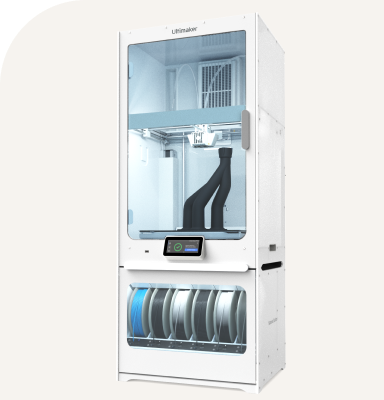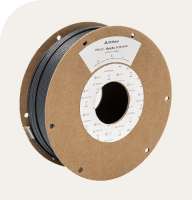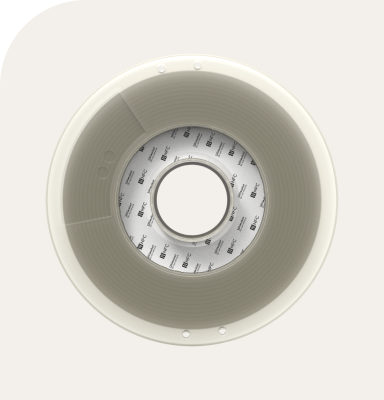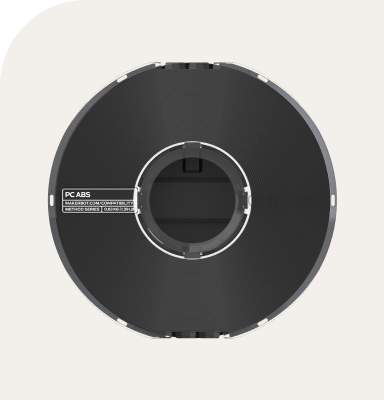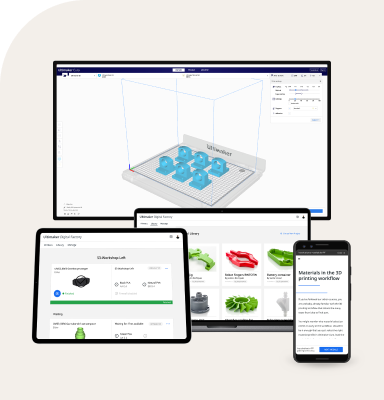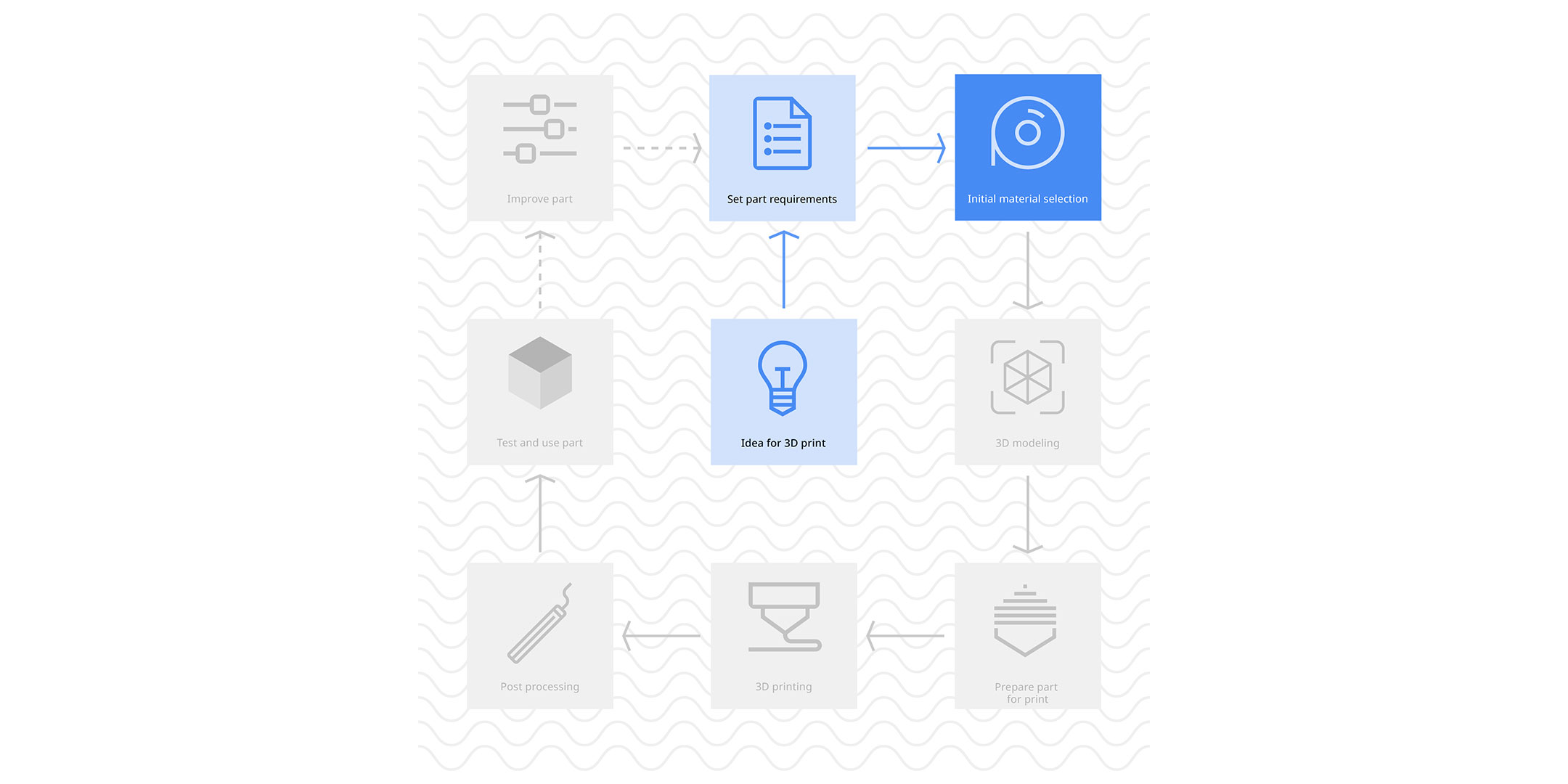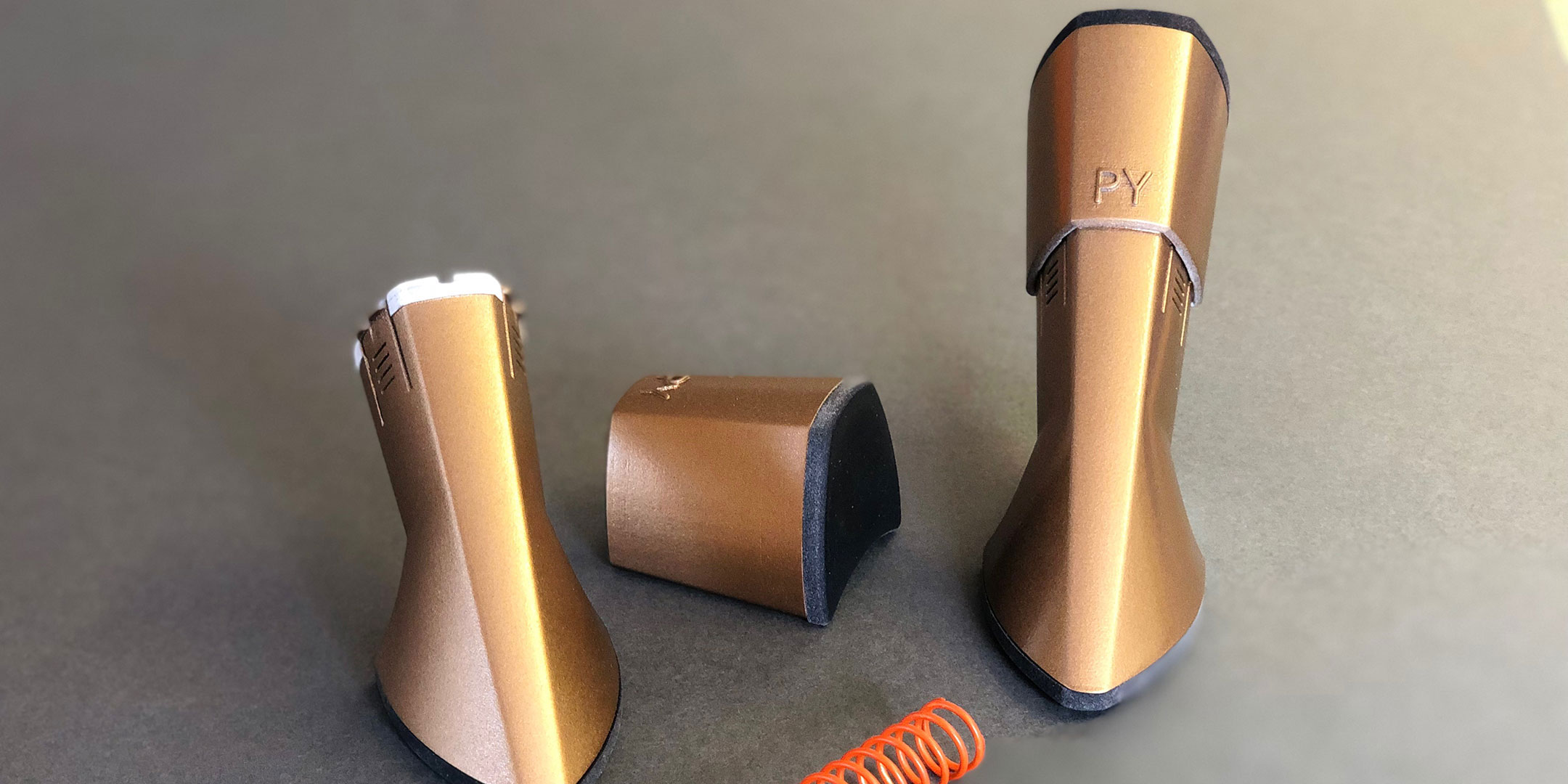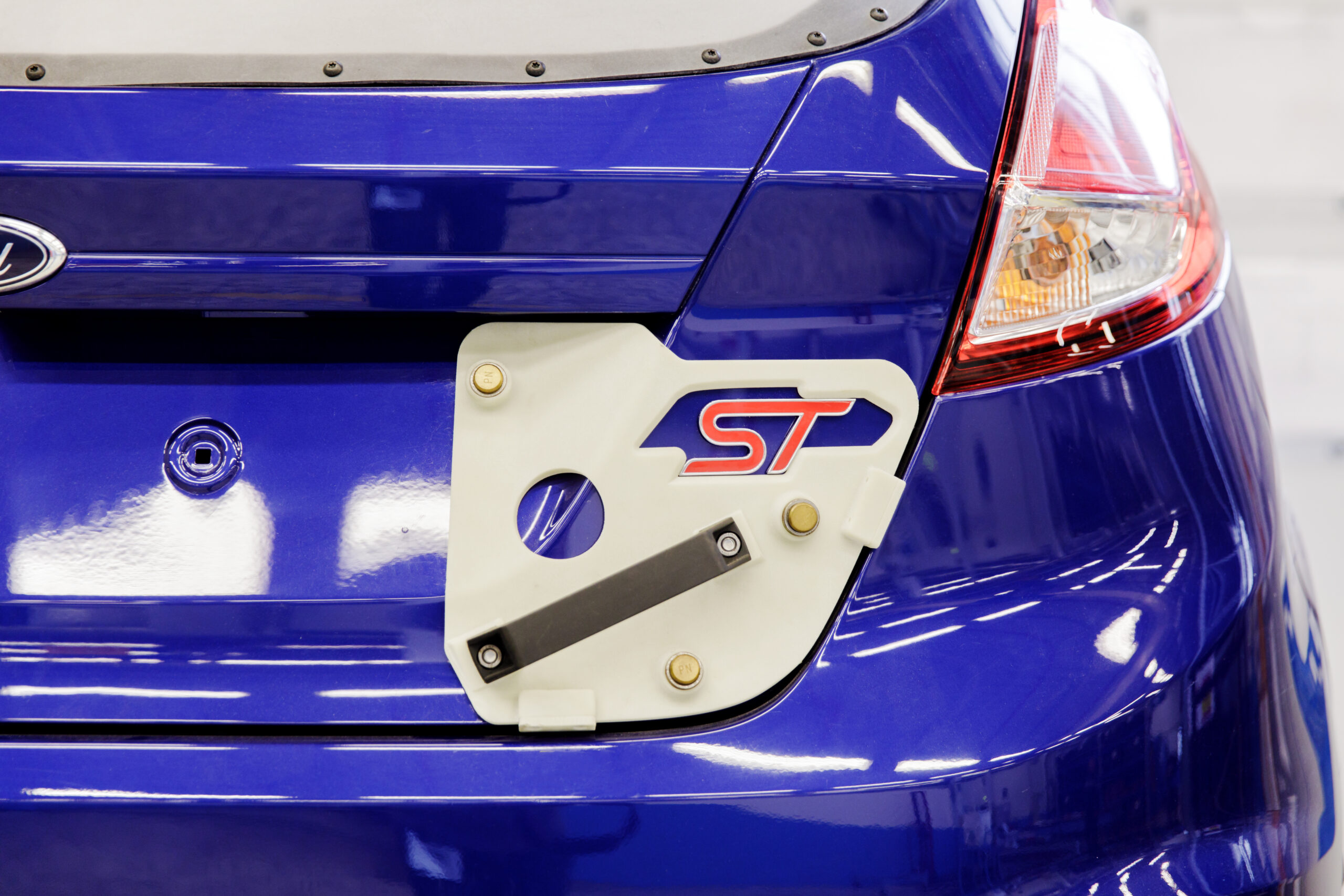In part two of our three-part series on 3D printing materials, we will cover the 3D printing workflow, types and properties of specific materials, and potential applications – as well as a brief overview of composite, bio-based, biodegradable, and recycled materials.
The 3D printing workflow
The 3D printing workflow starts with an idea or intent. Based on this idea and its application, you must then think about the requirements for the part you aim to create. Does your part need to be flexible, strong, temperature-resistant? What properties does your part need in order to work effectively and efficiently? Once you have set part requirements, it is time to make an initial 3D printing material selection.
Material categories
3D printing material categories are not official and are therefore somewhat difficult to designate. For the purpose of clarity, however, we will place materials into three categories. Take a look below for brief descriptions of each, along with a graphic that goes into further detail.
The topic of 3D printing materials is a large one, and we plan to revisit it regularly with posts about specific materials and material properties – in addition to the third part of this series. Be sure to stay tuned in to the Ultimaker blog for all the latest updates.
Industry applications and use cases
As stated above, the appropriate material for you depends on the use case or application of your print. Let’s examine three popular use cases for 3D printing, and some of the best materials for them.
Product development
A 3D printed prototype created by Idea Reality
When prototyping or concept modelling, what often matters most is getting your product to market in as fast as possible. Product development revolves around quick and cheap iterations that will allow you to prove your design’s worth. To be effective, then, prototypes must be easy to print and affordable – which is why the most popular materials for product development are PLA and Tough PLA. If prints are geometrically complex, support material such as dissolvable PVA or Breakaway will be useful. Additionally, as it is often helpful for a prototype to resemble a finished product, it may be wise to choose a material that has strong aesthetic properties.
Manufacturing tools
Ford uses 3D printed jigs and tools on its manufacturing line
When 3D printed, manufacturing tools can enable more efficient and effective working conditions. Think of saving time on an assembly line via the use of a jig; holding your product in place with a fixture; or improving a tool’s ergonomics by making it lighter. Nylon is a popular material for these use cases, as it is light, strong, and tough. Other materials that could prove useful in the creation of manufacturing tools include those that are wear-resistant, ESD-safe, post-processable, and flexible. These properties allow you to create a part that is the perfect fit for your working environment.
End-use parts
An adapter plate for a ZEISS microscope, printed on an Ultimaker 3D printer
End-use parts must be able to be used for as long as possible without breaking or becoming damaged. This is why it is important to consider materials with strong mechanical properties, as well as those which can withstand environmental influences. These materials include those that are UV-resistant, chemical-resistant, flame-retardant, wear-resistant, or temperature-resistant. Composite materials such as glass or carbon-fiber, are often used to achieve desired mechanical properties.
Bio-based, biodegradable, and recycled materials
Bio-based materials are those created from biological sources, such as corn starch or cellulose. Biodegradable materials are those that will biodegrade with time. Recycled materials are those made from recycled content. All three are more environmentally friendly choices, making 3D printing more sustainable. The Ultimaker Marketplace contains bio-based and biodegradable materials such as PLA, as well as recycled materials such as PLA, ASA, ABS, PET-G, and Nylon.
Composite materials
Composites, meanwhile, are those created from two or more materials, resulting in a combination that features different properties than their originals. Popular composite materials are fiber-reinforced, and include glass-fiber, carbon-fiber, and Kevlar. Composite materials improve part properties such as strength, stiffness, and heat resistance, and make parts more durable, meaning composite materials are suitable options for printing end-use parts.
Furthermore, composites are exceptionally useful when making light-yet-strong parts, as composites feature a high strength-to-weight ratio, and can sometimes be used as a substitute for metal. The actual strength partly depends on which fiber material has been used and how much of it has been used.
Again, the Ultimaker Marketplace contains several composite materials that can be used to achieve mechanical properties well-suited for end-use parts. For more information, be sure to read our blog post on glass vs. carbon-fiber materials.
Interested in learning more about 3D printing materials? Read part one of our 3D printing materials series. Or visit our Materials page, where you can sort by property, read in-depth descriptions of specific materials, and find the perfect fit for your use case.



